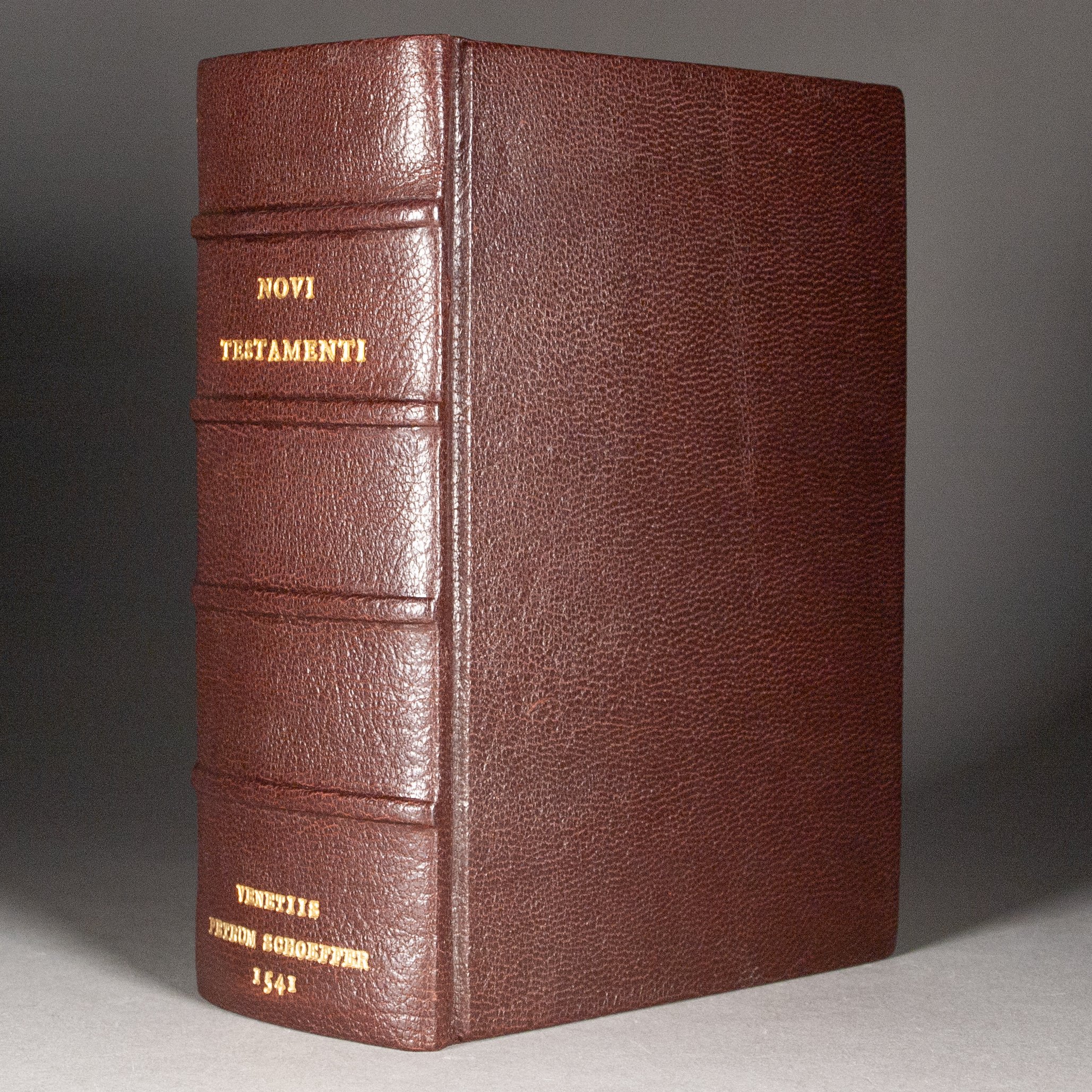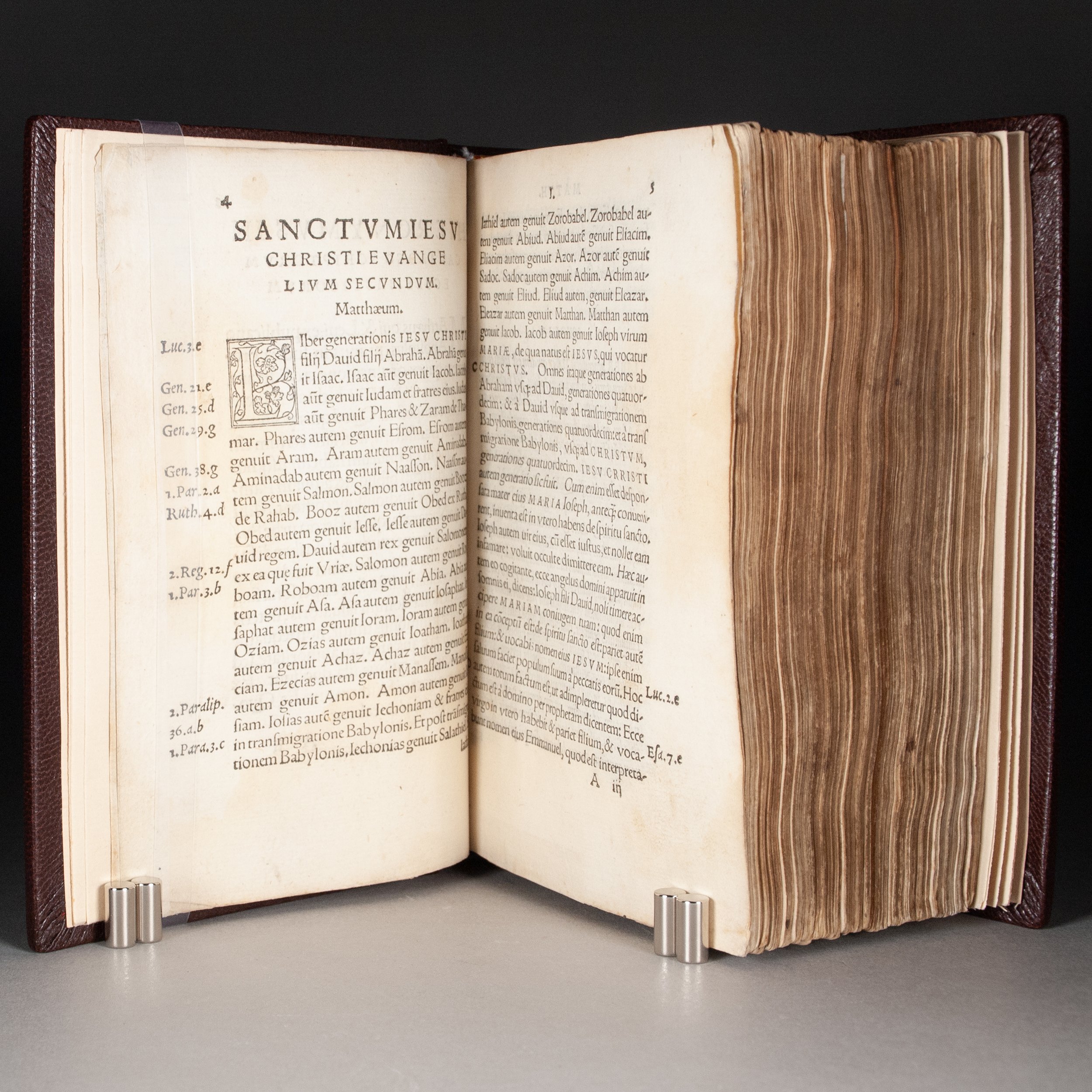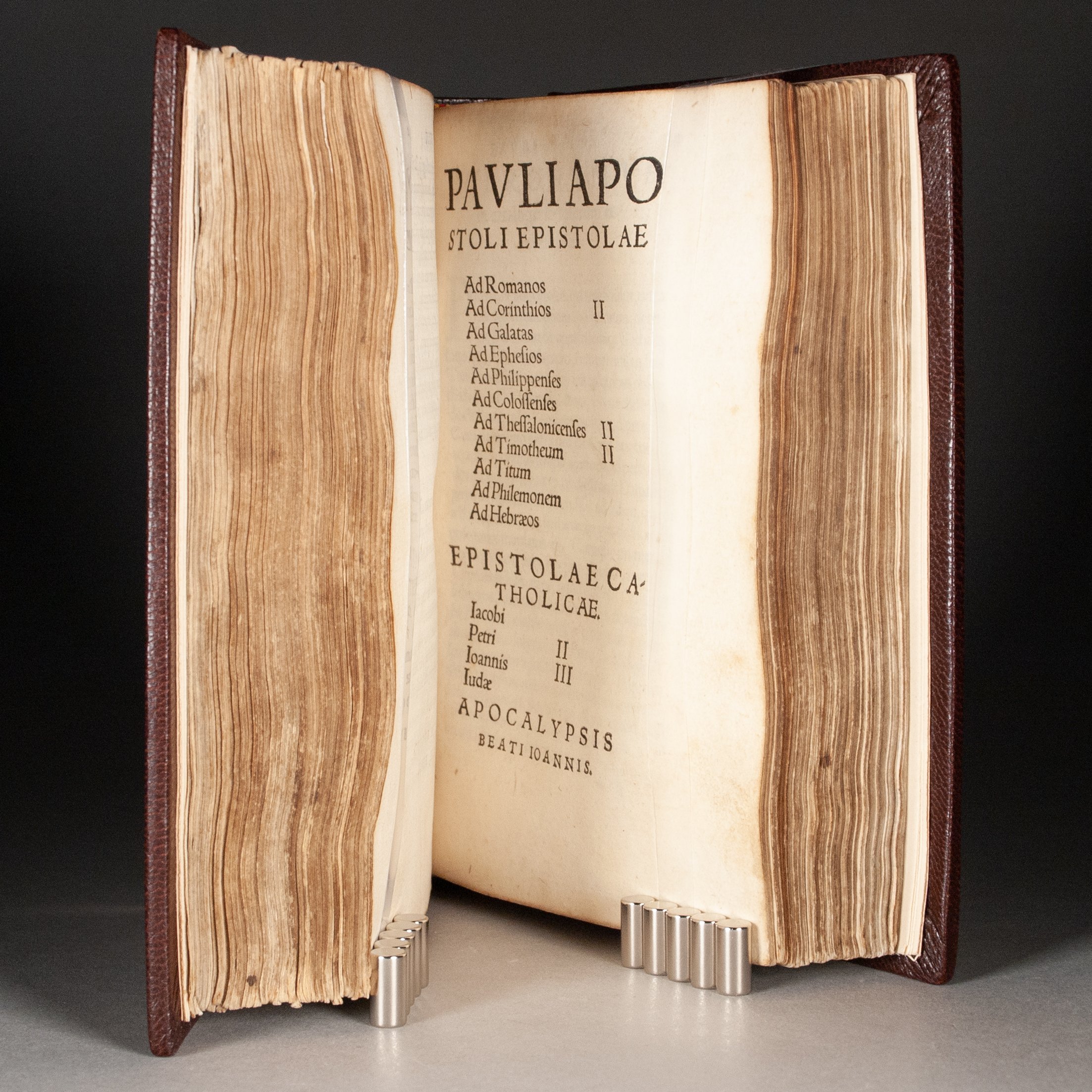Gutenberg's Italian legacy





Gutenberg's Italian legacy
Novi testamenti vulgata quidem aeditio sed quae ad vetustissimorum utriusque linguae exemplarium fidem, nunc demum emendata est diligentissime, ut nova no[n] desideretur, adiectis scholiis et doctis et piis & quibus opus est locis, ita locupletibus, ut pro co[m]mentariis sufficere possint
edited by Isidoro Chiari (Clario)
Venice: Peter Schöffer the Younger, 1541
531, [1]; 503, [1] p. | 8vo | A-Ii^8 Kk^10 a-hh^8 ii^4 | 163 x 109 mm
First edition of the Italian abbot's revision of the Latin Vulgate New Testament. His complete Bible followed the next year. Chiari introduced more than 8,000 corrections to the traditional Vulgate text, and included some paratextual matter that sympathized a little too much with Luther. So while Chiari had the privilege of serving on the Council of Trent, his Bible did find itself on the Pauline Index of 1559, the earliest official index of prohibited books (after a quickly suppressed 1557 precursor). ¶ This edition comes from the short-lived Venetian press of Peter Schöffer the Younger, third son of Peter Schöffer the Elder, the Paris scribe who came to Mainz to help Gutenberg print his 42-Line Bible. Johann Fust, Gutenberg's business partner, kept Peter on after the dissolution of his partnership with Gutenberg, and so the pair found themselves running the press that Gutenberg established. Johann Schöffer, second son of Peter the Elder, inherited the press in 1503 after his father's passing and ran it until 1531. Peter the Younger, by all accounts a talented typecutter, struck out on his own in itinerant fashion, operating presses in Mainz, Worms, Venice, and Strasbourg. "Venice specifically, and Italy generally, form a notable thread through the life of Peter Schöffer the Younger. His admiration of Italian printers was evident from the very start of his career" (Trocmé-Latter). But he worked in Venice only briefly, 1541-1542. He and his wife then returned to Basel, perhaps a more welcoming environment for the Protestant couple. ¶ We've traced just seven imprints from Schöffer's Italian office, one of them done for the Giunti. "The productions of his presses recommend themselves to the attention of bibliophiles, as much for their beautiful execution, by which he showed himself worthy of such an able father, as for their rarity, which is perhaps the reason most of them are little or not at all known" (Helbig).
PROVENANCE: With ownership signature on title of Sebastiano Donati, likely the 18th-century history professor of the same name. A single early marginalium on p. 417 (first sequence), pulling a quote from one of Chiari's notes ("not what they themselves want, but what he himself judges useful to them"). Collation notice on rear paste-down dated 15 October 1973, Fredericksburg, VA.
CONDITION: Modern full brown leather, probably ca. 1973. ¶ Title mounted on early (but later) laid paper, and remargined at the inner margin; some half dozen leaves with discreet marginal repairs, not affecting text; mild dampstaining, mostly marginal, seldom touching the text; dark stains in lower margin of Dd4-5; title soiled, and some scattered light soiling throughout.
REFERENCES: USTC 802963; EDIT16 CNCE 5973; H. Helbig, "Notice sur Pierre Schoeffer le fils," Messsager des sciences historiques et archives des arts de Belgique (1848), p. 161, #1 (suggesting this may have been his first book issued in Venice); Darlow and Moule, Historical Catalogue...of Holy Scripture (1911), v. 2, pt. 2, p. 932, #6121 (the 1542 Bible, but mentioning this 1541 New Testament in the note) ¶ Helbig, p. 152 (cited above); Index auctorum et libroru[m] (Rome, 1559), leaf I1r (Biblia Venetijs Isidori Clarij); Josef Benzing, Die Buchdrucker des 16. und 17. Jahrhunderts im Deutschen Sprachgebiet (1963), p. 296-297 (for chronology and bios of the Schöffers); Daniel Trocmé-Latter, The Strasbourg Cantiones of 1539: Protestant City, Catholic Music (2023), p. 13 ("a very skilled die-cutter and typefounder, supplied his own type to other printers at various stages throughout his career, and evidently took great satisfaction in his own printing work"), 27 (cited above, and suggesting his return to Basel might have been due to the 1542 establishment of the Congregation of the Holy Office of the Inquisition); Paul Chavy, "La Bible en langues vernaculaires," L'époque de la Renaissance 1400-1600 (1988), v. 1, p. 105 (on Chiari's revision, "which contained not fewer than eight thousand corrections to the traditional text")
Item #786
